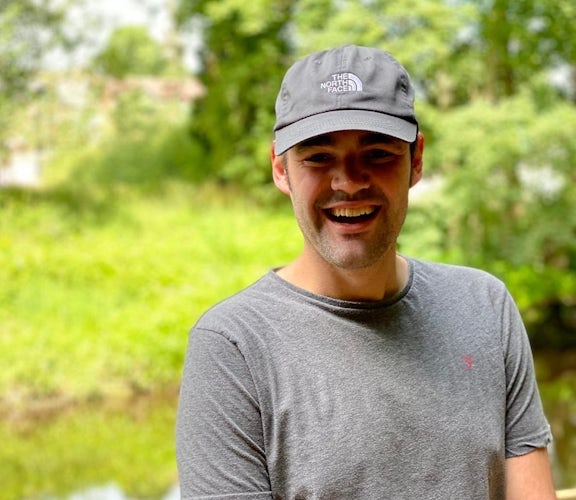Liam Patterson is the CEO and Founder of Google Shopping platform Bidnamic. We caught up with Liam to find out more about his role, and how Covid-19 has impacted both his company and the wider retail sector.
Please describe your job: What do you do?
As CEO my job is really varied. I’m usually head down in developing our business strategy and as we’re scaling rapidly, a lot of my time and attention is dedicated to recruitment and meeting new clients. Although we’re not actively looking to raise at the moment, I’ve been speaking to quite a few VC firms that have been are getting in touch and it’s great to hear their input.
Talk us through a typical day…
A typical morning is a bit of a battle with my young sons, Rory and Lorcan, getting them ready and ensuring they eat their breakfast! Myself and a few of the team were still working from the office regularly (prior to the recent lockdown) and I like spending time with the team, so I rarely work from home if it’s possible now.
It’s about a 15 minute drive to the office and the first thing I do if I’m in is check the markets before turning my attention to key priorities for the day. I like to promote a healthy work/life balance so I break up my day with some exercise, usually a run or game of squash and always ensure I’m home on time in the evening. The flipside to this is that I gamify my day to ensure maximum productivity during working hours. I’ll set myself a challenge to get something done by a certain time and keep tasks dynamic. You may be familiar with the term ‘eat that frog’ and I always get tasks I don’t want to do out of the way first.
How do you maintain an effective work/life balance?
One key trick I live by is not getting the laptop out or to work from my phone when I’m at home. Forcing myself to live by this rule actually makes me more productive during working hours and I’m usually able to get home by 6pm to spend time with my family whilst also getting a lot done during the day.
How has strategy changed at your company?
We previously grew through referral, either word-of-mouth from our own network or clients. Once upon a time, events and trade shows were a really good way to get our name out there. It was pretty clear to delegates that we were in the world of Google Shopping so tended to get a lot of success from walk-ups to our stand from companies that were using it as a shopping channel and wanted to learn how to use it better.
eTail in Palm Springs was the last trade show we went to and with the pausing of events, we really put our emphasis on digital and scaling up our marketing team. It was always on the agenda but Covid made it come to the forefront. I hired Alun, our CMO, to head up our digital marketing activity and we’ve scaled our content team with the addition of a new designer joining us this week, as well as onboarding external agency specialists to drive growth.
How has customer behaviour (or your clients’ customer behaviour) changed during the pandemic?
At the very beginning, clients naturally panicked with all the uncertainty during lockdown. Many of our clients are omnichannel so the immediate loss of a lot of revenue created fear about recession and massive decline in sales. This didn’t last long as the furlough scheme took pressure off businesses and clients shifted activity online. Those that were already working with us had a massive advantage and were able to capitalise on the surge in online shopping. We have seen continued massive growth in ecommerce sales across most categories.
What do you predict for the future?
The adoption rate of ecommerce isn’t going to go away. There are swathes of new online shoppers as those who had never purchased online embraced it out of necessity, particularly older consumers. Many say the adoption of ecommerce has been fast forwarded 10 years and I agree with this. Despite supporting ecommerce retailers, I don’t believe the high street will die as it has significant benefits that can never be replicated online. Shops will become more experiential to complement the convenience of online and things like the ability to click and collect offer quick delivery and fulfilment options to customers.
There will, however, be a massive surge in competition online. On Google Shopping, the cost-per-click (CPC) rates are rising with more retailers than ever competing online for that limited ad space so smaller players need to ensure they are targeting effectively to create decent ROI. Thankfully, the cost of machine learning technology has come down so it can be applied to the mid-market and is no longer just for the bigger players with deep pockets, so we anticipate greater uptake amongst a wider range of companies, which we have certainly seen for our Bidnamic Google Shopping technology platform.
What advice would you give a marketer right now?
Becoming data-driven is critical. A lot of businesses we see don’t have revenue tracking set up accurately, so are making wrong assumptions by over- or under-tracking revenue. With digital, marketers need to make sure data is granular to cope with the increased competition on keywords. For marketers at smaller retailers, your bigger competitors like Amazon or Wayfair have teams of data analysts giving valuable insights so you have to be just as smart. Thankfully there are ways and means of achieving this!
Covid-19 impact on retail: What trends are emerging in 2021?





